Bottom-up k-Vertex Connected Component Enumeration by Multiple Expansion
IEEE International Conference on Data Engineering (ICDE) 2024
Haoyu Liu, Yongcai Wang, Xiaojia Xu, Deying Li
School of Information, Renmin University of China, Beijing, 100872



Overview
Bottom-up
This paper investigates the reason and proposes that the local expansion should be reformulated as a Multiple vertex collaborative Expansion problem instead of the traditional Unitary Expansion (UE). A Multiple Expansion (ME) approach, which allows to expand multiple neighboring vertices jointly and collaboratively is proposed, which is proven exact in local expansion. However, the exact ME-based local expansion needs to explore large neighborhoods in each step, which is time-consuming. To address the efficiency issue, a Ring-based Multiple Expansion (RME) is proposed to conduct ME within one-hop neighbors. A maximum flow-based merging algorithm FBM is proposed for effective merging. A maximal clique and breath-first-search-based quick seeding algorithm QkVCS is proposed to generate
System Architecture
We first use Q
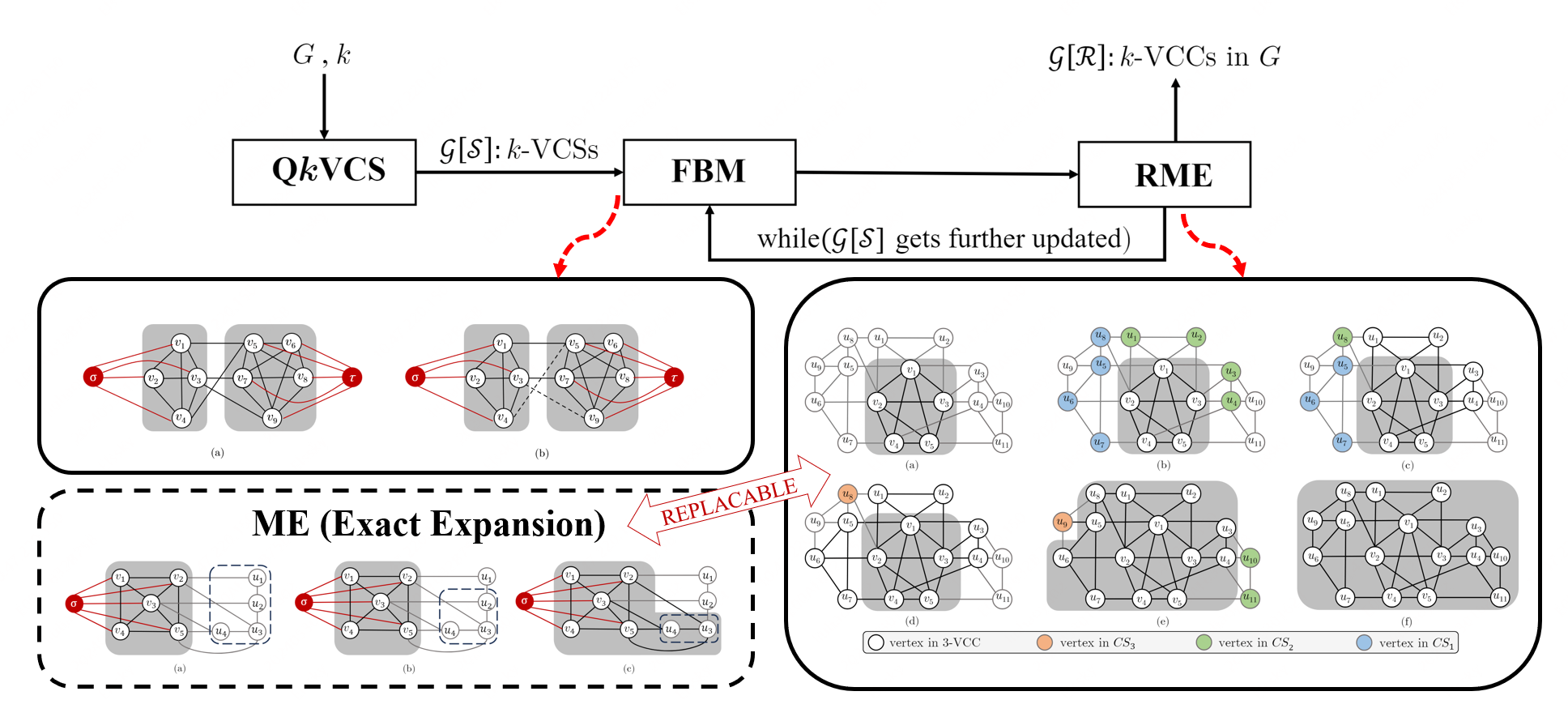
Contributions
The inaccuracy problem of VCCE-BU is shown due to UE and neighbor-counting-based merging. We reformulate the local expansion problem as a multiple vertex collaborative expansion problem and multiple expansion algorithm (ME), which is proven exact. We further propose a ring-based multiple expansion (RME), which is much more time-efficient.
We propose a Flow-Based-Merging (FBM) method for
We propose RIPPLE, which conducts RME and FBM from the distributed
Evaluations
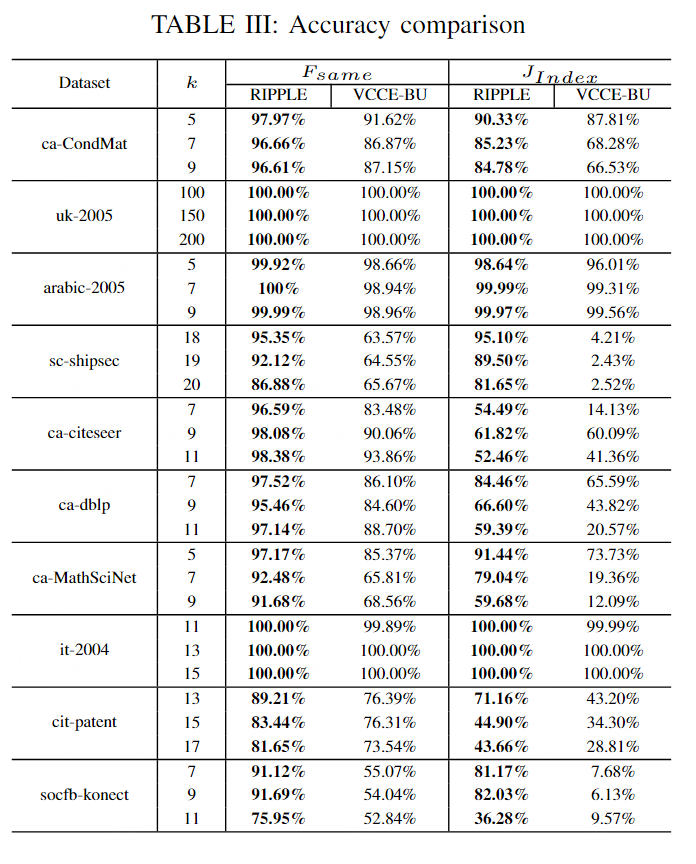

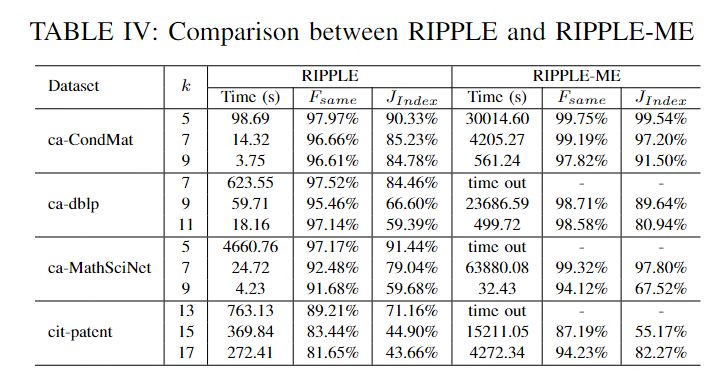
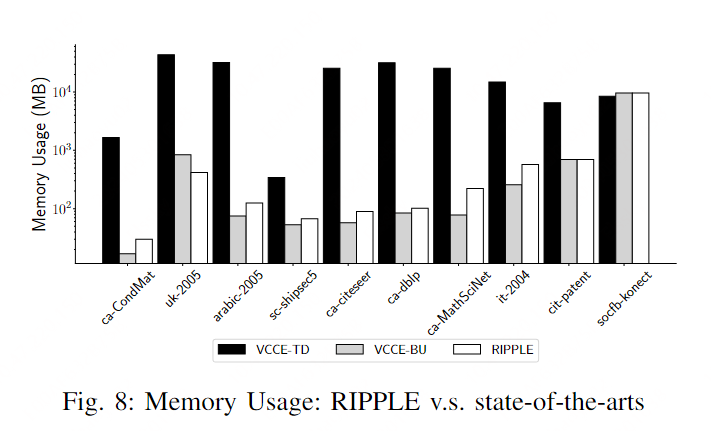
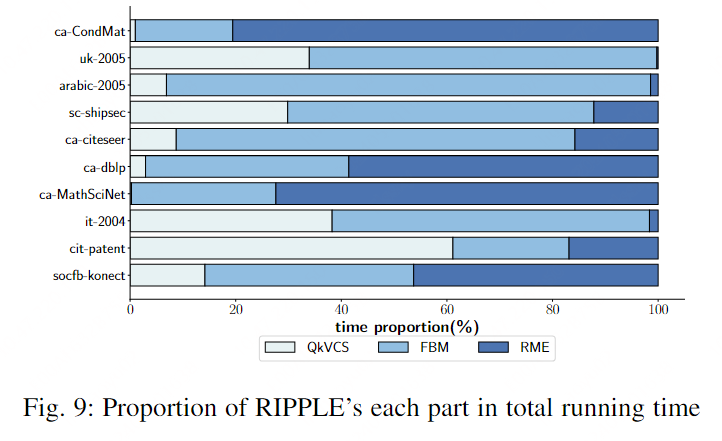
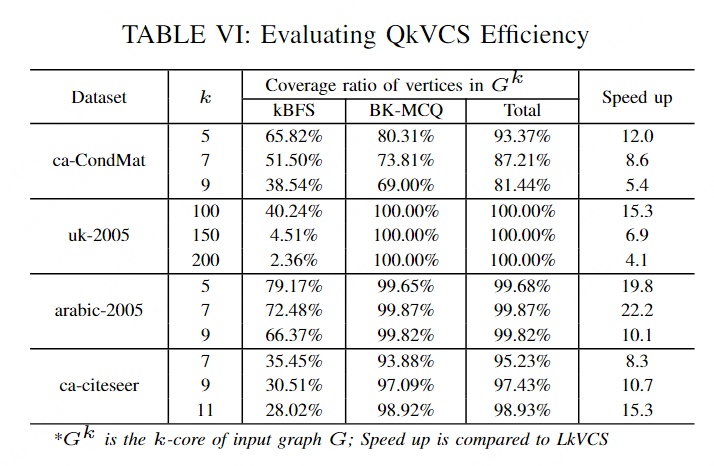
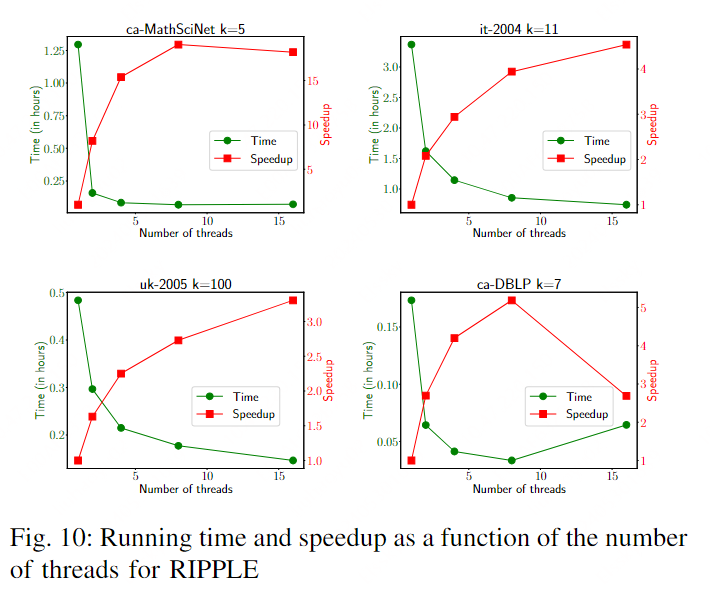
Acknowledgment
This work was partially supported by the National Natural Science Foundation of China Grant No. 61972404, No. 12071478, and Public Computing Cloud, Renmin University of China.